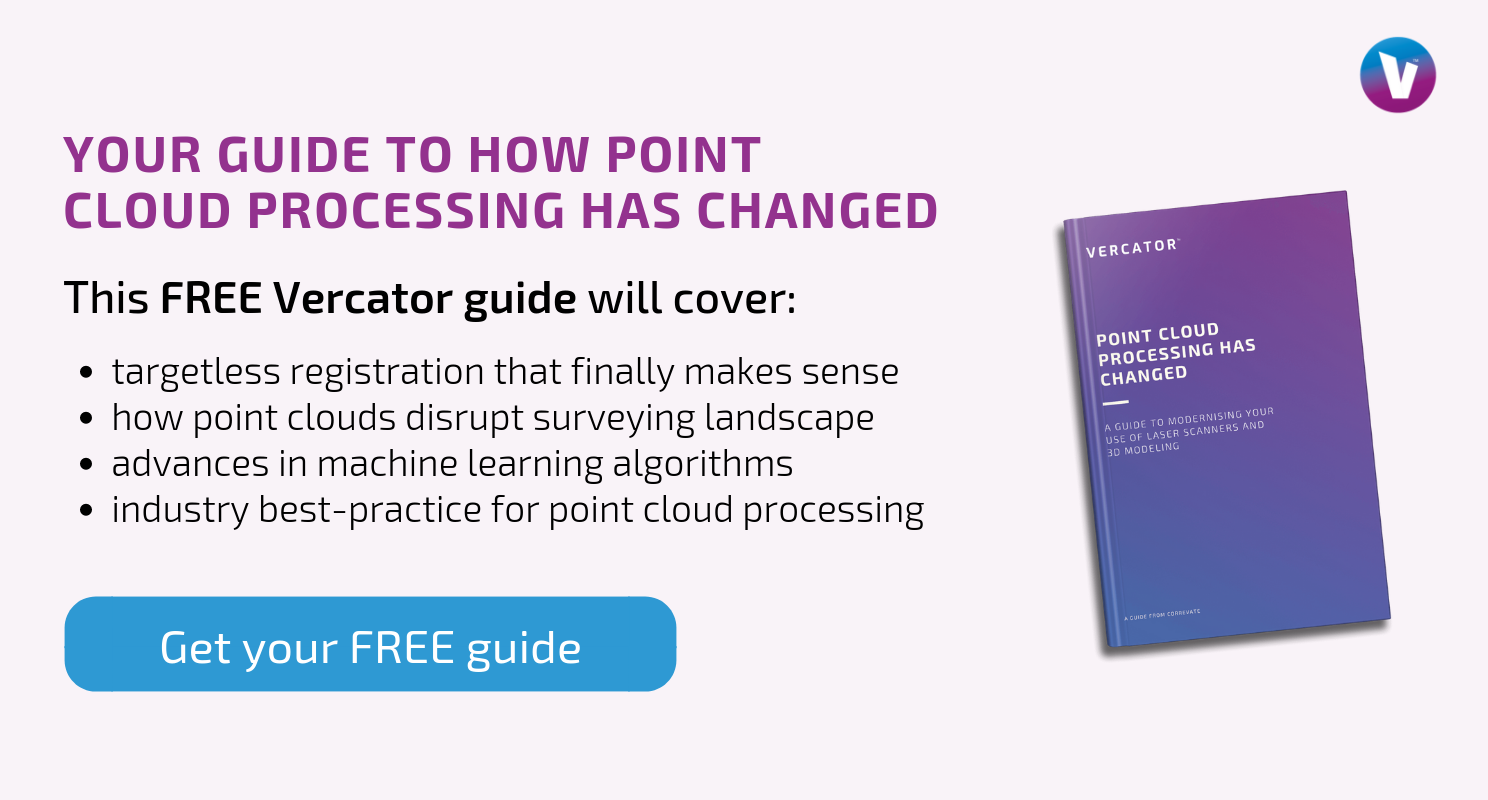A smarter approach to point cloud registration

Technological change creates opportunities. The use of point clouds for mapping 3D spaces is itself a novel real-world application of several technological developments. The invention of lasers, time-of-flight measurement systems and computer processing capabilities were all necessary in order to create the equipment on which modern surveyors depend.
This process of development culminated with the introduction of commercial LiDAR systems during the 1990s. Software advances have continued to ease the manipulation and modelling capabilities of point cloud data. Yet, the processes involved in creating these datasets has remained relatively static. Recent advances, however, are setting the stage for a smarter standard of industry excellence.
The traditional approach to point cloud generation and processing
The challenge with laser scanners is the common need to make more than one scan. Lasers can only make line-of-site measurements. Under most circumstances, at least two scans will be needed in order to collect enough data for a representative image to be developed using downstream processing. For complex projects, the number can be hundreds of times higher.
When individual scans are taken at a high resolution, they make accurate measurements. For a finished point cloud to retain this level of accuracy, each scan must be aligned with those around it to the same degree of precision that each scan possesses independently. This process is known as ‘registration’ and is traditionally achieved through the use of point-reducible targets.
Registration targets are either free-standing spheres or chequerboard surface targets that are placed throughout a scene. Through overlapping scans, each adjacent scan can be ‘fixed’ in a common context by shared targets. These targets are identified by downstream processing programs and used to align the scans.
This has been a reliable and robust process for creating point clouds from multiple laser scans. The issue is that it is time-consuming, slow and manual. Time must be spent in the field diligently placing targets in such a way that they will be visible in each successive scan. When mapping complex and tight interior or urban space, this can become a laborious procedure.
The hope of a smarter approach to point clouds
Being able to abandon these targets and register scans simply using common natural features in adjacent point clouds is how the creation of LiDAR surveys can be dramatically simplified. This isn’t a new idea, but it has historically failed to successfully deliver simplicity. The increased challenge of assessing targetless scan data for registration and alignment slows down the programs assigned to completing the task.
This would be fine, except these programs have also required manual oversight. The size of these files overwhelms traditional algorithmic approaches to holistic data assessment. This means that an operator has to set overlap scan parameters and then manually assess each successive alignment. This level of manual intervention, combined with the slower processing speed means that any time saved in the field through avoiding target placement is more than paid for processing those scans in the office. A mid-sized project consisting of 130 separate scans can take nearly 25 hours to process. With constant supervision, that is at least 3 days of work!
The delivery of a smarter approach to point clouds
Point cloud processing for targetless registration has changed. Machine learning algorithms have enabled a smarter approach to working with point clouds. Rather than looking to assess all of the data points independently, a new breed of processing software has drastically decreased the time spent processing and automated procedures by breaking apart the registration process into three stages.
Point clouds are first subjected to a rotational alignment. The positional data of a scanner is used to extrapolate each point within a ‘cloud’ into a directional vector with a normalised length of 1 unit. This allows each vector to be lifted from its original context and an entire point cloud to be collapsed into a single point — making a ‘vector sphere’. The identity of that scan is retained through the unique density and directional characteristics of the vectors branching off from that single point.
Viewing the point clouds in this way allows them to be subject to rapid rotational alignment with adjacent scans by overlaying the spheres and pairing similarities. This spherical analysis then allows for 2D point density alignments on the horizontal and vertical axes. This multi-stage process drastically improves the speed at which scans can be aligned and removes the need to set parameters for scan comparison.
Summary: Advances in point cloud processing have paved the way for targetless registration to become the new industry standard
What has been delivered is a significantly faster targetless registration process that requires little to no oversight. Surveyors are no longer forced to weigh time spent in the field with time spent in the office. It is now possible for surveyors to leave their targets at home and embrace targetless registration under most circumstances.
There are still difficulties when a large amount of movement is occurring — such as outside. This, however, is only a true problem when there aren’t also stationary objects available with which to ‘fix’ scans. If scanning a field dominated by a few trees on a windy day, you may still need to bring free-standing targets. Under most other circumstances, surveyors with access to advanced machine learning technology can adopt a smarter approach to point clouds by leaving their targets at home. Vector-based processing cuts targetless processing time by 40%-90% while simultaneously automating most tasks.
Tags: point clouds

